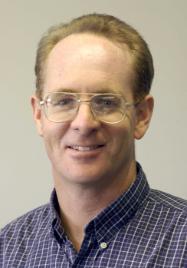Resource towns should be able to aspire to grow local workforce base
Published on 10 Oct, 2011
Media Contact:Embargoed Until:
Local and regional communities in resource areas of Australia would be better placed to attract new workforce if government strategies take into account the reality of Fly In Fly Out (FIFO) and Drive In Drive Out (DIDO) patterns.
That's according to CQUniversity's Professor John Rolfe who has made a submission to the House of Representatives inquiry on FIFO, with help from colleagues Lindsay Greer and Dr Delwar Akbar.

Professor John Rolfe
Click here to View/Download full-sized Image
Professor Rolfe is Professor of Regional Economic Development. He and his team recommend that policy settings should be framed around giving people freedom of choice about where to live and work, and transport options between locations where appropriate.
He says mandated FIFO and DIDO should not occur, as a substantial proportion of the workforce is often prepared to live locally.
A standard FIFO approach would remove opportunities for local and regional workforce participation, and distant FIFO operations cripple opportunities for regional development and set a precedent for future workforce location patterns.
"While the majority of new workforce may prefer to commute to mines for block shift periods, a substantial core of workforce may prefer to live locally," he says.
"The choices that employees make about whether to commute are likely to be influenced by the residential patterns at the beginning of their employment. Where housing is available and workers can live close to employment, there is greater likelihood that more employees will live locally."
Professor Rolfe notes that 'shift length' is an important determinant. Longer block shift rosters make it more viable for employees to commute to the workplace from further away (even interstate and internationally).
The submission says government should address regulatory and planning issues that provide major resource companies and other employers with perverse incentives to favour FIFO and DIDO arrangements over a locally-based workforce.
Appropriate housing stocks should be developed in local communities to match the potential inflow of new employees, and high housing costs that can generate perverse impacts on local town development should be avoided.
Professor Rolfe says government can help address issues that make local towns less attractive as residences for workers over FIFO or DIDO options, including relocation barriers, provision of infrastructure and services, and lifestyle factors.
"FIFO services and facilities should be integrated into local communities to maximise economic development," Professor Rolfe says.
"There should be better integration policies to overcome perceived social differences between FIFO workers and local communities.
"There should be better guidelines ... for workforce accommodation options that encourage a higher level of liveability, encourage family-friendly practices, and provide different accommodation choices.
Professor Rolfe notes the Bowen Basin region is one of the more closely settled regions of Australia, containing 20 small to medium townships. However, at least 40% of all jobs in the area are serviced by DIDO and FIFO operations, and this is likely to be an underestimate.
Interestingly, Professor Rolfe points out that while the use of a non-resident workforce is now an integral part of many mining operations in Australia, FIFO and DIDO arrangements are not restricted to the mining industry.
ENDS

